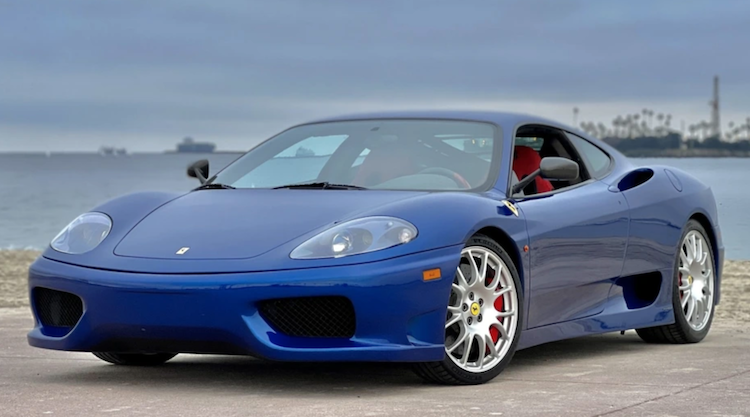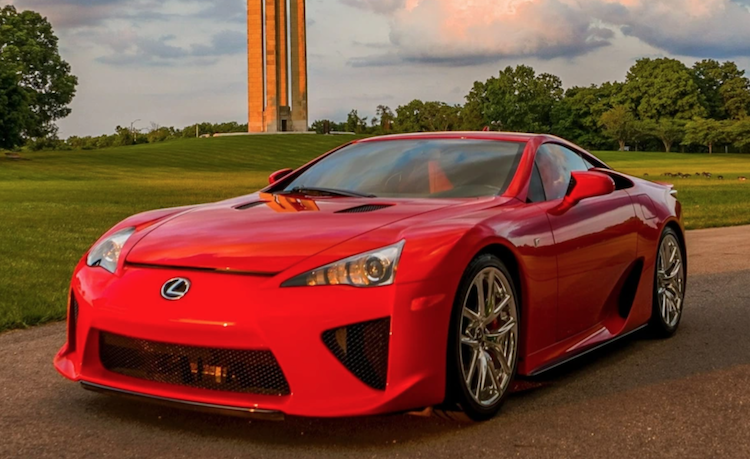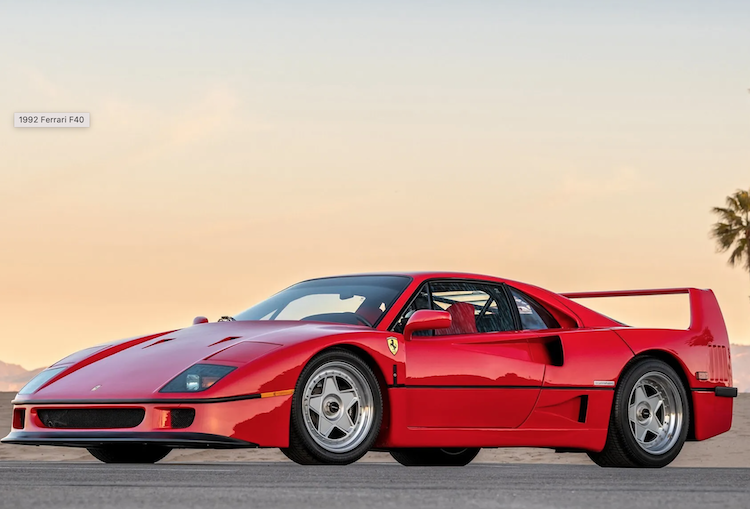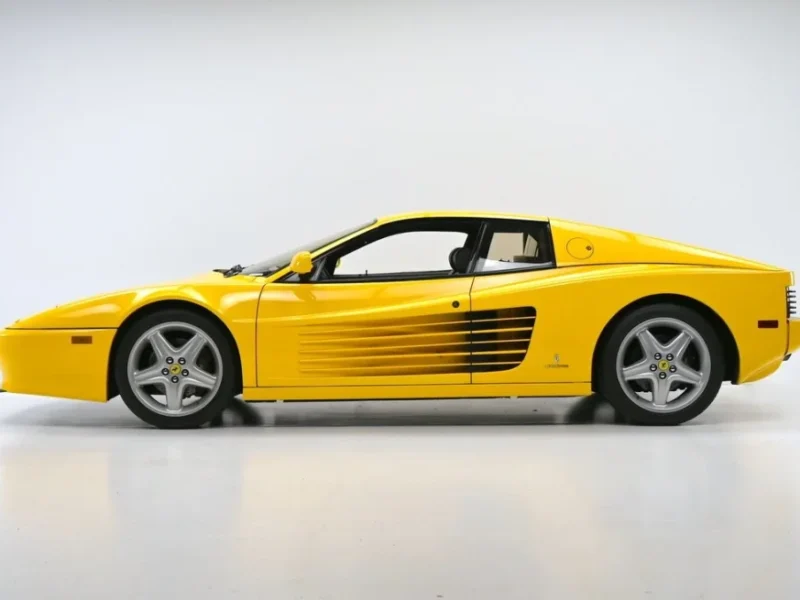Regular readers will know that the Rienzi Report includes a simple chart with each of Tony’s predictions. Listed on the chart: six factors that help determine a collector car’s market value. If you’re looking for an at-a-glance analysis, three easy-to-judge factors stand out. The lower the number of miles on the clock, the more well-preserved its mechanical and physical condition (service records are key) and the lower the number produced, the greater the value. But you also have to look at the picture. Because color counts. And not necessarily in the way you think . . .

For example, Ferraris are red and yellow, right? In the general public’s mind, for sure. But the general public isn’t the collector car market. Nor are they Ferrari drivers. Many people answering to that description consider red and yellow Ferraris too brash to drive to work or the country club. They prefer something in a darker, more discreet color.
A Ferrari F360 in certain blue or silver color is a “gentleman’s car” and worth 10 to 15 percent more than one in red or yellow. Interior color is also a factor. Black black is the kiss of death. Black tan could be a gentleman’s car. Silver black is not a hit, but it’s not a problem.
Surely this color consideration doesn’t apply to iconic cars like the F40! Ferrari painted every one of the 1,311 examples built between 1987 and 1992 in Rosso Corsa red. Or did they? Rumor has it a handful of yellow and black F40’s left the factory gates behind. We know for sure that the Sultan of Brunei sent an unknown number of his eleven F40’s back to Italy to be repainted in something other than red. Those F40’s are worth a lot more than red ones.

Last year, the blue Ferrari F40 above sold for $1m. Wait, you say, RM Sotheby’s just sold a red 1992 F40 for $3.8m. The difference? The Aqua Metallic blue car didn’t sport a factory paint job. Its hue was based on, gulp, a Porsche color. Sacrilegio! If the blue F40 had come from Maranello, its value would have easily surpassed RM’s car on the auction block.
I recently cast eyes on one of two Pink Panther pink Hemi ‘Cudas built by the Dodge Boys. All things being equal, the homage to Friz Freleng‘s animated creation is worth a lot more than its darker colored cousins. ‘Cause rarity counts!
Unless it doesn’t. These days, upmarket car makers sell exotic and sports car in a wide range of colors. Give them enough time and money and they’ll match your car to a paint sample or purse. Which makes the color -> value consideration more difficult. But not impossible.

In August, the red 2012 Lexus LF-A above sold for $725k. About a week before, a silver 2012 Lexus LF-A sold at RM Sotheby’s Monterey auction for $819k. There were two main differences between the red and silver Japanese supercars: mileage (7300 vs. 3,850) and color.
While “auction fever” may account for the $94k difference, I reckon the cars’ color was far more relevant to the hammer price than mileage. A red Lexus?
How do you “rate” a collector car’s color? Rarity combined with authenticity (factory good, respray bad) and, especially, what sells. Set aside your own color preferences and consider what other people want, now and in the future (e.g., the Magma Beam Orange AMG GT Black Series).
I’m not fan of sand-colored Porsches but the market disagrees. I loved my Jaguar XK120 in dark blue. Buyers heavily favor any Jag – but especially the E-Type – in original British Racing Green. Collectors love them some Estoril Blue E36 BMW M3, An Estoril Blue E31 8-Series? Not so much. A Dakar Yellow BMW M3? I think we can all agree: geddowdaheah.
Simply put, a good or even great color isn’t the most important factor when determining a collector car’s value. It’s not even at the top of the list of variables. But there’s no doubt that a car in bad color is a bad decision. It will be cheaper to buy but much harder to sell.


